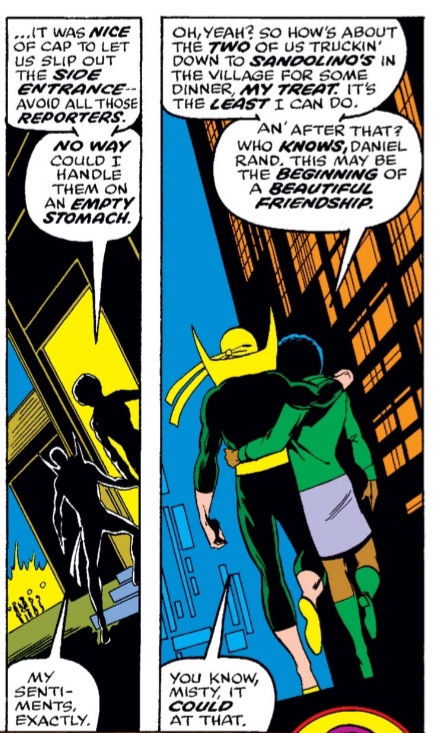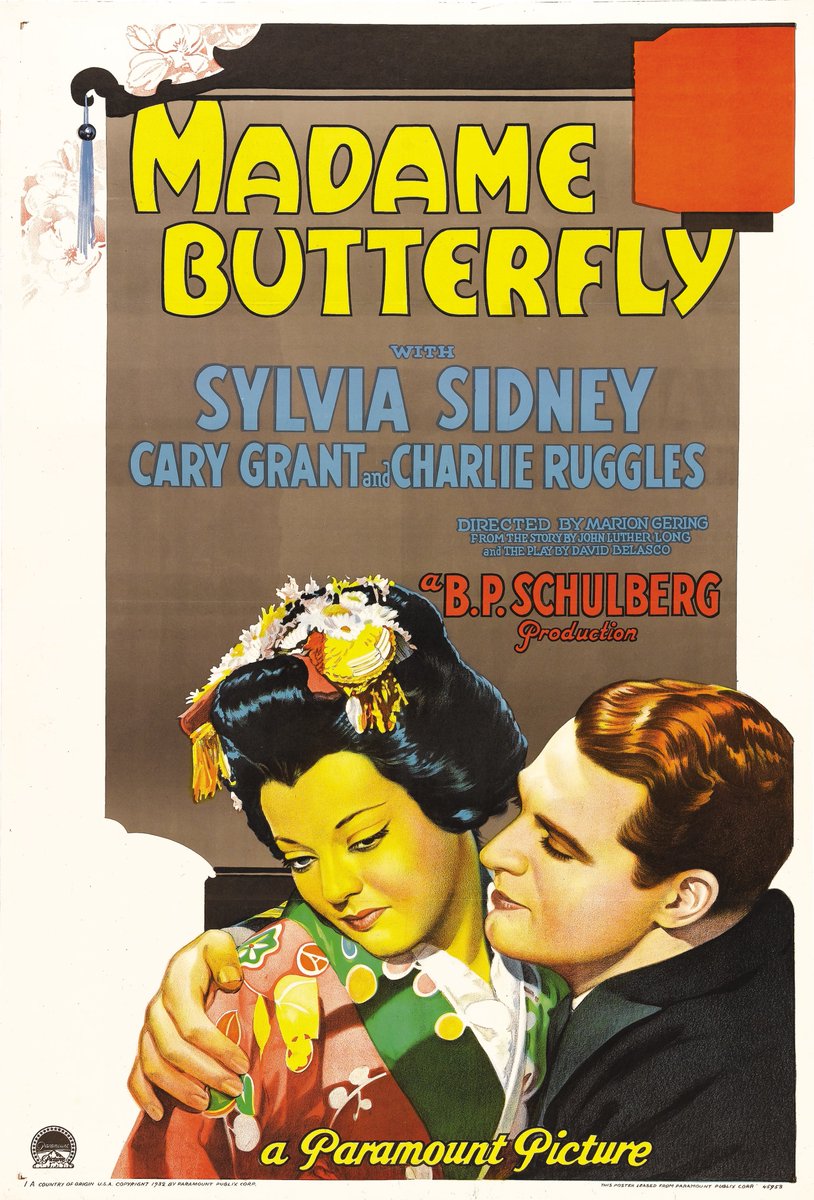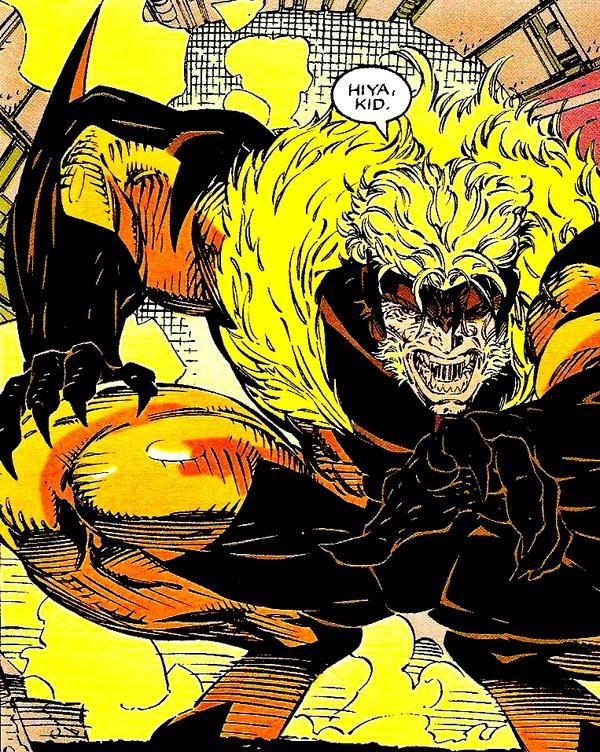
In the pages of UXM, Claremont would go on to achieve a number of highly significant comics firsts for representation, but one of his most famous comes in Iron Fist, with what is widely considered the first mainstream interracial kiss in comics’ history. #xmen #IronFist 1/11 

C’s UXM resume includes what has been identified as the first African-American superheroine (Cocca 125), the first black superhero team leader (Darowski 78), and the first canonically Jewish superhero (Cronin). Misty/Danny comes before all of these, however. 2/11 



The kiss comes in 1977. Really importantly, it is not a high fantasy setting, a future story, or a random kiss with no emotional attachments, but the rational fulfillment of a pre-established and carefully cultivated romantic trajectory. 3/11 

Beginning in Iron Fist #1 (or earlier, depending on perspective), Claremont cultivates the Misty/Danny relationship as a fraught partnership (usually built around a shared love of Colleen Wing) then a friendship, and finally a love, declared on-panel by both characters. 4/11 

The relationship also features a great deal of power and agency on the part of Misty, who is the worldly, experienced partner, in contrast to Danny’s naivety. She isn’t just there to be rescued by him; she does a lot of rescuing herself. 5/11 

Misty also shows a commitment to her autonomy/agency and a sense of non-romantic priorities. She becomes angry when Danny befriends a former IRA bomb-maker and, when pressed, sticks to her ideals, abandoning Danny in a complex show of commitment to her beliefs. 6/11 

Misty shows further autonomy in her existence outside of Iron Fist. She doesn’t simply orbit Danny (as many Marvel girlfriend characters live for the hero). She has her own adventures as a PI, a secret agent, and as Colleen’s partner in the Daughters of the Dragon. 7/11 

One of those adventures even has Misty taking on an implicitly sexual relationship with a crime lord as part of a deep cover assignment. This removes her from the sort of fidelity/chastity dynamic that we often see in Marvel girlfriends and giving Misty sexual agency instead 8/11 

Simply put then, this isn’t just AN interracial relationship; it’s actually a pretty solid one, with a fair amount of give and take between both parties by the standards of the time. 9/11 

We should also note that Claremont’s approach to the relationship is race-blind (which can be good or bad, depending on perspective). Though Danny actively battles misogynist tendencies learned in K’un-Lun, nobody even comments on race in their relationship. 10/11 

In all of this, Claremont shows the kind of commitment to progressive representation that would become a benchmark of his time on UXM, whilst offering numerous points of comparison to interracial X-relationships like Storm/Forge, Storm/Yukio and Logan/Mariko. 11/11 

• • •
Missing some Tweet in this thread? You can try to
force a refresh






















